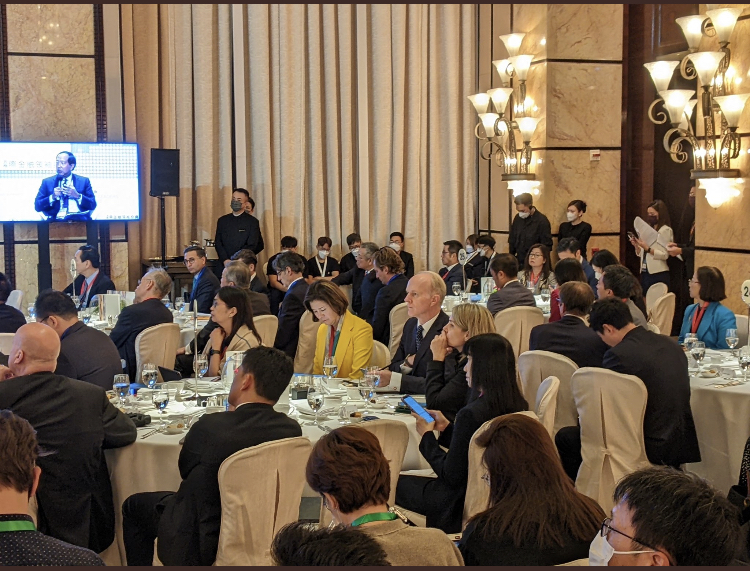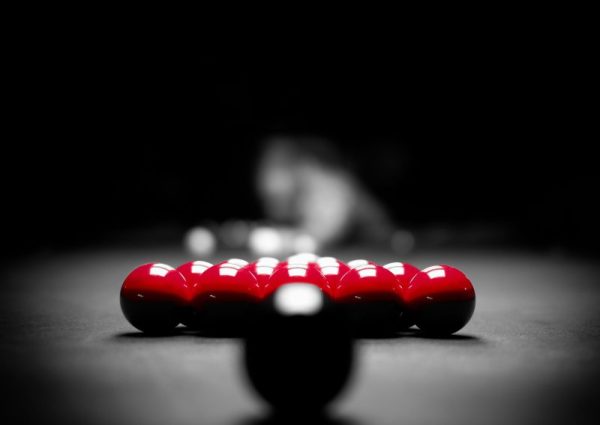Rob Campbell, creative planner at Sunshine, a creative planning company sums up the ideal for every delegate at a corporate event. “I go to a conference for the experience. I want to be inspired as well as informed.”
And yet, he adds: “I’ve been to so many conferences, industry events and brand functions, and many of them end up being in a dressed-up hotel ballroom, with little in the way of convincing decoration, a few chairs covered with cheap fabric, and an attempt to shove a lot of information down my throat.”
Then, there are the successful events, those that envelop the audience and invite them to experience, not just to sit in on, an event. In that way, says Campbell: “Image and design are not just expensive throw-aways”, there to justify a large budget.
A spectacular event is about understanding the core message of the company, the raison d’être of the event, and the key points attendees should walk away understanding.
Before the stage goes up, decorations transform the room from drab to dazzling, and delegates arrive for the keynote speaker, the basic questions of who, what, when, where, why and how much have to be established. But what truly matters, when turning to an event design or management company, is that the brief is clear, that it has been discussed with one of the key decision-makers within the company and that, whether the budget is big or small, the expectations are realistic.

Michelle Cheng, managing director of Occasions PR and Marketing, which just celebrated its 20th anniversary in Hong Kong, explains the behind-the-scenes process: “The perfect event, campaign or launch begins many months before you wow your first potential customer or welcome your first guest”. And the first step in coordinating with an event designer is choosing the right one.
That meeting should be an inspirational one, says Sarah Williamson, creative director, Jack Morton Worldwide in Hong Kong. “I advise people to invite us in and speak to us – see what we’re all about. It doesn’t mean you have to work with us, but we want to partner with you in the right way, so if you have the time, it is well worthwhile to ask for an introduction.”
With so many event companies vying for the same clients, some firms might be more strategic, some might really just be wedding planners, while others that could have been ruled out in the first round might actually be organising an event not featured on the website that is very similar to your next corporate function.
Once the right designer is chosen, the brief becomes the next key step. Says Williamson: “It would be great if people could come to us with a few clues. A five- to 15-page brief might include a lot of factual information, but nothing about the creative elements they might want to see. If they loved a particular performance piece they’ve seen recently, or they have an idea of what they like, or what the company might be inspired by, that is always going to be helpful.”

Likewise, if a group has no real idea of what the theme or the options are for the event, Williamson says: “We’re good at that – we can ask questions and probe a little bit to find the heart of what will make the event work.”
One thing she cautions against is making too many decisions without involving a key decision maker in the company.
“If you are not ultimately able to give a definitive yes or no, I highly recommend at early stages going back to that ‘boss’ and making sure we are all on the same page.
“If we are coming up with very creative ideas that communicate your message, but the person who has to sign it off simply isn’t on board with that – well, it’s much better to know sooner rather than later,” she says.
Every company wants to look the part, which means an event that is up to date, looks slick and incorporates a few “wow” factors that will always impress.
Just how to achieve that is based on the fundamentals of the company and the goal of the event itself.
Creating a look and feel
The aspects of a conference that are talked about long after delegates return home could be big – the CEO entering the stage through a water curtain or appearing as a hologram. Or it could be simple – a chat room or full-service café being installed that creates a buzz.
Especially for events that happen annually or several times a year, Williamson notes: “If you can add creative value in the budget to make the old into something new, or replace an element you’ve been relying on, people will respond to it because it’s different and unique.”
At times, unusual events can add that element. Clemson Lo, chief executive at MV Destination, says: “We look for places like old houses, warehouses, or even churches, where the outside is going to be totally different from the design and theme on the inside. That’s your ‘wow’ effect.”
Occasions PR has done this for a number of clients in Hong Kong, where space is a limited commodity and yet guest lists tend to be quite long. For the opening of Lane Crawford in IFC Mall, the firm took over the roof of the mall, allowing the backdrop of the city do much of the talking. This reinforced the idea of bringing fashion to the business hub of the city.
Similarly at a party to celebrate the opening of Coach’s first flagship store in Hong Kong, the firm wrapped a warehouse in Kowloon in the Coach logo, redefining the space for the night. Occasion’s Cheng says these efforts helped to “expand the reach and impact of their key messages”.
“You have to do something fresh to avoid repeating yourself,” says Williamson. For delegates like Rob Campbell, who attend many conferences and event year after year, the same set up simply will not resonate. However, something as simple as changing the experience slightly from day to day will engage delegates as they enter the room, still potentially bleary-eyed and jet-lagged, but ready to learn. Jack Morton did this with sportswear brand Adidas by altering the appearance of the stage. “It means delegates are seeing a totally different look and it worked really well.”
Injecting life
Any number of elements can create an entertainment piece or talking point. From art to installations, live performances to fashion shows, and lighting to technology; there are options for every budget that make an event interesting and memorable. As Cheng says of Occasions’ events: “We ensure that those exposed to our work end the evening with smiles on their faces and the best impression of our clients.”
To do this can take lavish decoration and design elements, or it can be a strategic lighting design. “It’s all really budget dependent,” says Williamson. And with venues that can sometimes be misleading.
MV Destinations’ Lo explains that unique venues often need the basics – like a kitchen and electrical wiring and AV systems carefully coordinated as industrial spaces or churches don’t necessarily have those built in. However, while a hotel’s ballroom will come fully fitted out and have easy access to other facilities, “if it’s old and dreary”, he says, “you might spend more money trying to cover it up than taking on a cheaper and less operational venue and adding the elements you need”.
From building an amphitheatre in a ballroom to choosing a gallery for its inherent aesthetic appeal, budget constraints can be overcome with a bit of creative thinking. One of Jack Morton’s clients was looking to showcase a new season of sportswear to an international group of regional marketing managers, but didn’t want to spend a lot of money. Instead, the firm offered up a solution that fitted the bill in an entirely different way. An up-and-coming Filipino band was hired to entertain as well as to model the clothes, which they wore during their performance.
Lighting can be one way of bringing the focus of the event into clear view without spending a lot of money. For a more intimate feel, even a large space can become small by lighting the middle of the room, not the edges, adding the brand colour across the floor or wall, and having the speaker in the middle, rather than on a stage at the end of the room. Likewise, for an open feel for a group of 2,000, multiple disco balls hung at different levels, coloured lights and the right music created artwork all their own.
There is a push to include more creative elements in events and event designers say that the value is in the way in which art elements change delegates’ mindsets, not just in the wow factor.
Occasions’ FENDI launch in the Landmark building in Hong Kong featured a three-storey high dress suspended from the ceiling as the centrepiece. Even for brands that are not necessarily thought of as creative – a law firm or a bank for instance – sculptures, installation pieces or artists creating unusual pieces in-house during the event can stimulate the brain and keep delegates switched on and engaged. People also remember events and situations in which they were questioned or challenged, which makes creative elements all the more crucial.
The key to event design is understanding the goal of the event, how it aims to promote the brand’s or company’s fundamentals, and how it will be received by the attendees. The sky is the limit – within budget of course – but with conferences, events and association meetings more common today than ever before, adding as much in the way of creativity and a change from the status quo will not only hold delegates’ interest and send key messages more effectively, but provide the lasting impression so vital to every event.
ART MATTERS
Thoughts on how art and entertainment can enhance the experience, from Sarah Williamson, creative director, Jack Morton Hong Kong
“It is important to help our clients communicate in a way that is much more emotive on a subliminal level, which makes it essential if you can find something like an installation or a piece of artwork – it’s just more engaging. The audience questions more; their brains are put into think mode; and, they aren’t just listening to a speaker.
“You should let these creative elements do some of the work getting your key messages across. Perhaps you’ve done a lot of CSR, so you display a sculpture that kids in an orphanage made, and nearby you have computers where attendees can go online and see pictures, or write to the kids. It’s more attention-grabbing and more emotive.”


